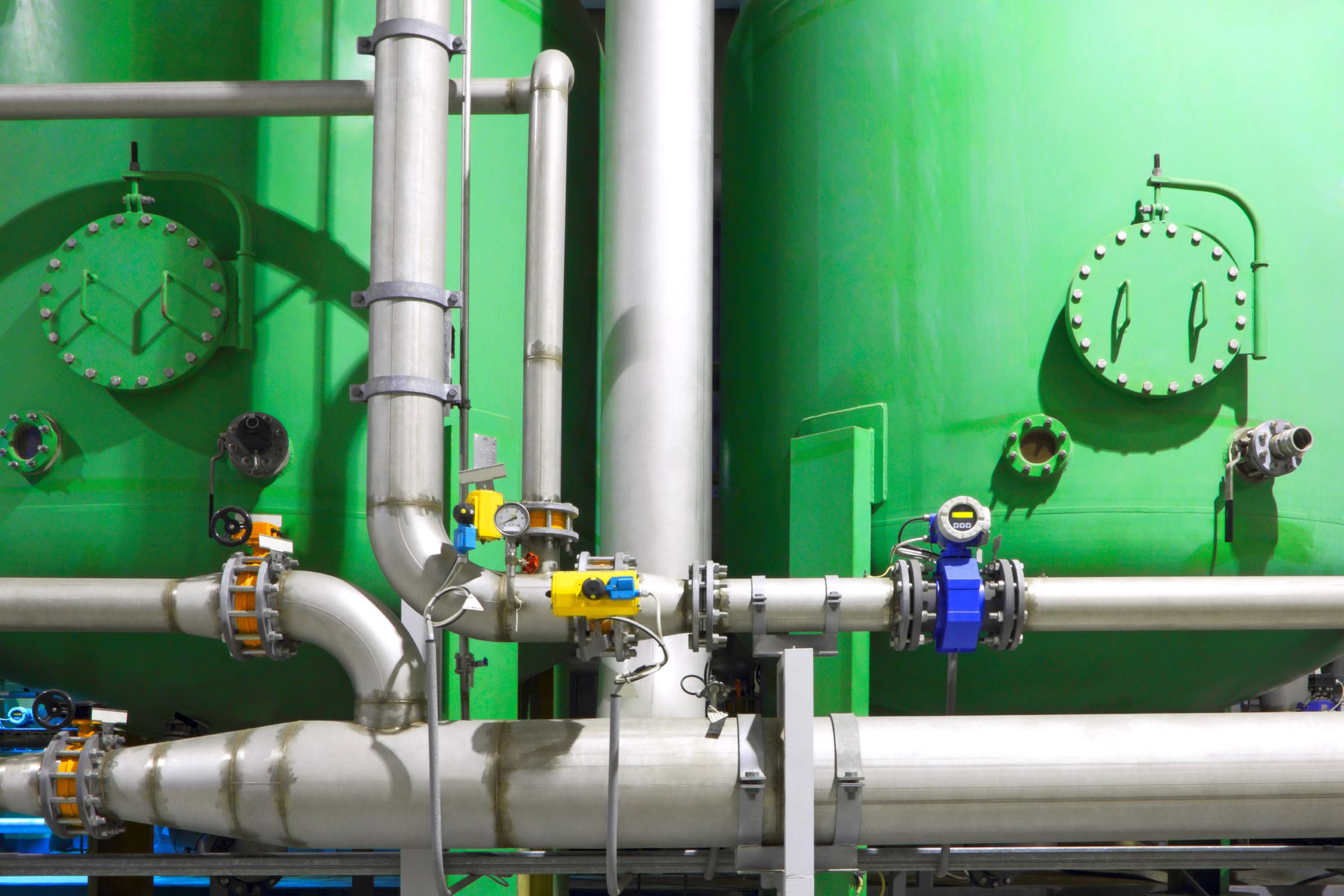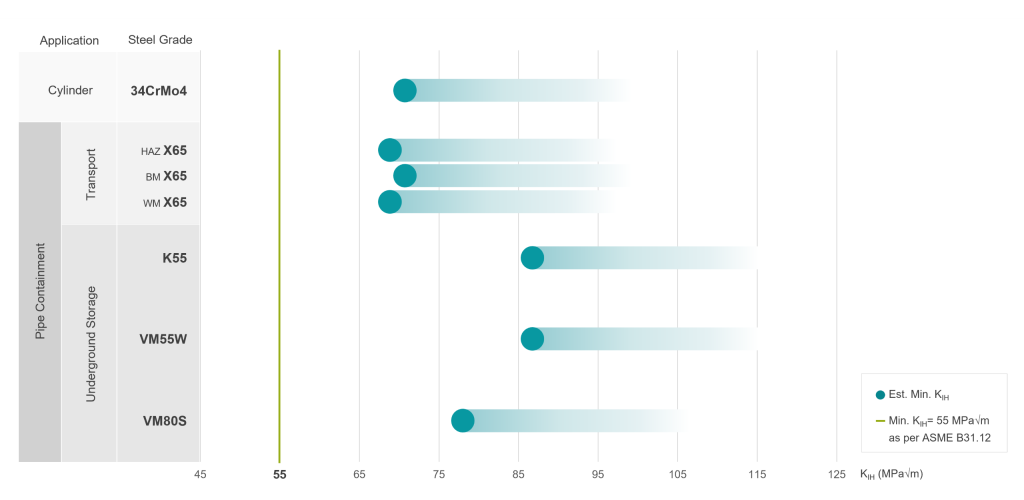Vallourec Qualifies Materials for a Wide Range of Hydrogen Applications


Hydrogen is set to play a key role in the energy transition acting as a low-emission energy carrier for various applications. However, hydrogen is known to affect mechanical properties of some materials, a phenomenon named hydrogen embrittlement. To ensure safe transport and storage of compressed gaseous hydrogen, steels must be proven resistant to such environments. Vallourec successfully carried out a first series of tests qualifying the fracture toughness resistance of a selection of steel grades for OCTG1 pipes, line pipes and pressure vessels in the presence of pure H2 gas.
Hydrogen has a strong detrimental impact on the mechanical properties of steel which is known as hydrogen embrittlement. This can manifest in a decrease in ductility and fracture toughness and increases a steel’s susceptibility to fatigue causing cracks from which hydrogen can leak into the environment.
“To ensure that our steel grades are resistant to hydrogen embrittlement we started by testing the fracture toughness resistance of a selection of grades covering several hydrogen applications”, explains Laurent Delattre, Hydrogen Development Manager at Vallourec. “Indeed, to successfully deploy hydrogen at a large scale, a wide range of infrastructure is needed, from transport in pipelines to storage in large quantities underground or in smaller amounts in cylinders. The grades to be qualified had to therefore cover this range of applications”.
The first selection of standard and Vallourec proprietary grades tested in the presence of pure H2 gas were:
- Grade X65 for line pipes including the qualification of girth welds done by Serimax
- Grade VM55W (55 ksi proprietary grade) for weldable OCTG pipes
- Grade K55 for seamless OCTG pipes
- Grade VM80S (80 ksi proprietary grade/L80) for seamless OCTG pipes
- Grade 34CrMo4 for pressure vessels

These results prove that all tested materials are suitable for hydrogen service under 100 bar H2 gas. Furthermore, it can be argued that these materials are also suitable for higher pressures of hydrogen considering the quite limited impact of this environmental parameter beyond approximately 50 bar based on the thorough literature review performed by SANDIA laboratories2.
In addition to the fracture toughness tests, Vallourec is also currently carrying out fatigue crack growth rate tests in order to provide customers with a complete understanding of the steels’ fatigue behavior to hydrogen. Other Line Pipe and OCTG grades are also currently being tested and will be progressively added to the growing portfolio of qualified Vallourec materials for hydrogen applications.

Leveraging the results
With hydrogen projects slowly but surely gaining steam around the world, Vallourec is anticipating customers’ future needs by learning as much as possible about its grades’ behavior to hydrogen.
“Our aim with these test results is to be able to provide to our customers an extensive range of material data and knowledge that will allow them to design and safely execute their hydrogen projects”, explains Florian Thébault, Principal Corrosion Engineer at Vallourec. “We already have a few customers who have expressed their interest in our qualification process which confirms we are moving in the right direction”.
These qualification results are in line with those obtained by the HystorIES project of which Vallourec is part of. Vallourec’s L80 and K55 grades were successfully tested using different methodologies in a more demanding corrosive environment in porous media. Read HystorIES’s material qualification reports here. The tests also fall within Vallourec's commitment to collaborate in establishing the guidelines for the transport of hydrogen gas in pipelines as part of DNV’s H2Pipe JIP.
With the hydrogen qualification of OCTG, Line Pipe and Mechanical grades as well as of its VAM® connections, Vallourec is already able to offer a strong portfolio of solutions for a large section of the hydrogen supply chain including transport and storage in small, mid and large quantities.
[1] Oil Country Tubular Goods
[2] San Marchi, C., and Somerday, B., 2012, Technical Reference for Hydrogen Compatibility of Materials, SAND2012-7321.



